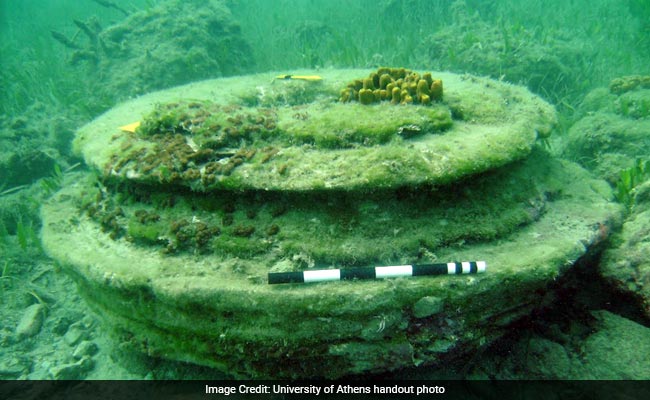
Zakynthos, Greece (BBN)-When tourists snorkeling near the Greek isle of Zakynthos first spotted mysterious structures about 20 feet under the sea, they thought they might have stumbled upon a lost city.
And you can't blame them: The site features what appear to be clusters of cobblestones and symmetrical stone cylinders with Hellenic flair, reports the NDTV.
It's easy to see the waterlogged structures and imagine a bustling square full of artists and philosophers.
A study published Thursday in Marine and Petroleum Geology confirms what archaeologists have suspected since the discovery of this "city": It isn't a city.
But its real origin is just as cool, and perhaps even more surprising.
These structures, which seem so obviously human-made to the untrained eye, were actually built by bacteria.
Archaeologists who dove down to see the site for themselves immediately noted a lack of coins, pottery fragments or other signs of life.
So they got to work finding another explanation, analyzing the mineral content of the "pillars" and "streets."
And it turns out that the structures have a perfectly natural origin story - no humans required.
The structures contain a mineral called dolomite, a calcium byproduct produced by microbes that feed off methane.
When bacteria huddle around a reliable source of the gas, their calcium excrement can react with methane to produce the cement-like substance.
"Essentially what you've got are bacteria that are fossilizing the plumbing system," study co-author Julian Andrews of the University of East Anglia told Smithsonian Magazine.
The lost city shows the remains not of an ancient people, but of an ancient leak, as gas seeped in through subsurface faults.
The tubular structures were likely formed as microbes piled up around focused jets of methane, while the slabs that built the city's "streets" may have been the result of large, sloppy spews of gas.
There's no natural methane leaking out of the area today, but there must have been when the structures formed during the Pliocene, an epoch 5.3 to 2.6 million years ago.
The phenomenon isn't uncommon, but structures like these are generally found much deeper, where natural gas is more likely to seep into the water.
BBN/SK/AD